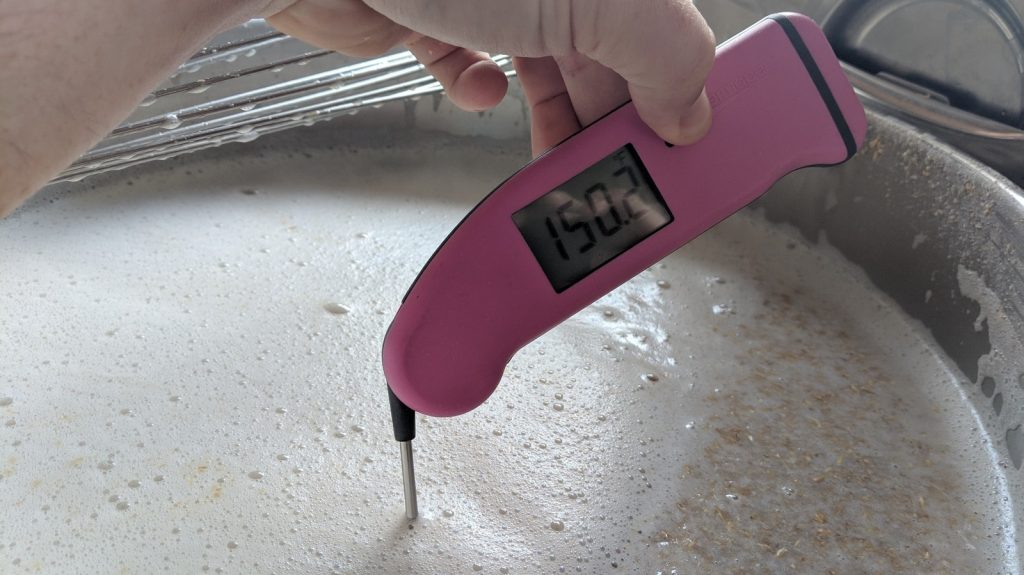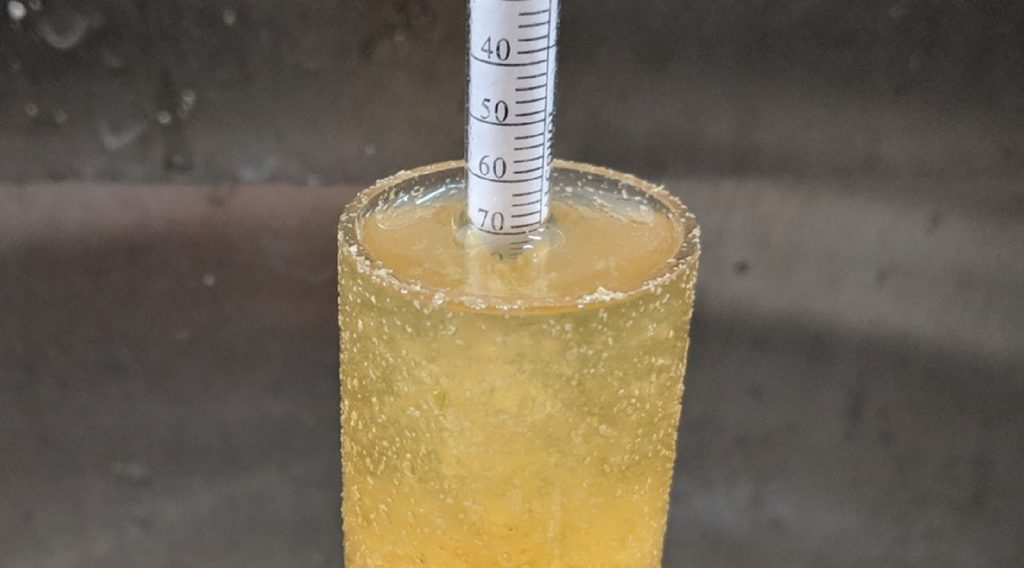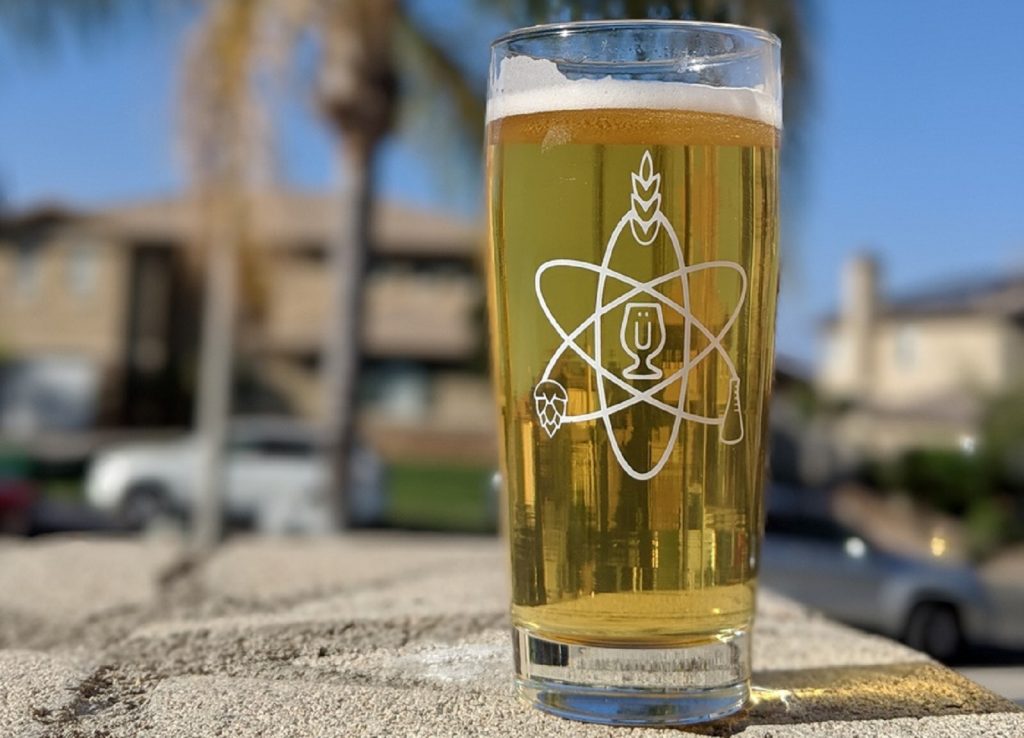Author: Ray Found
I am at once of two minds when it comes to IPA, and especially Double IPA (DIPA). On one hand, I love them– a well executed, fresh IPA is a beer that so masterfully hides its size, allows an infinite array of possibilities of hop character showcased alongside a simple malt bill. On the other hand, like seemingly every consumable I’ve come to love passionately – be it coffee, pizza, or a great steak – IPA, and DIPA to an even greater degree, are so frequently disappointing in practice. Sure, there’s some truly great ones-– Pizza Port Swami’s never disappoints, and a fresh serving of Firestone-Walker Union Jack, Bell’s Two Hearted, Sierra Nevada Tropical Torpedo, or Russian River Pliny The Elder is a genuine treat.
Sadly, more often than I’d like to admit, unless I’m at a great brewery or a restaurant that puts a real effort into it, I get IPA that’s a good deal worse than those ideals. Either overly-caramel, cloying from age and hops in that familiar and unpleasant stickiness, or… bear with me here… hazy as shit and under-bittered.
My point isn’t to bash NEIPA. It’s maybe the first beer style that actively encourages freshness, and for that I applaud the NEIPA trends. That said, I’ll be the first to admit that I haven’t had an NEIPA yet that I wouldn’t prefer with more sulfate, stronger bitterness, and some additional flocculation.
DIPA has the added challenge of combating sweetness that’s twofold– first, the added residual sugars inherent when using a larger malt bill, plus the unique ethanol sweetness I find becomes prevalent somewhere around 7.5% ABV.
Around the time Jake was talking about his India Pale Lager, I was sitting in Chuckanut Brewery, a favorite of Marshall’s and mine, drinking a staggeringly fantastic Pilsner that beer was hoppy… really hoppy! I began to wonder if taking an approach opposite to Jake’s would work as the foundation for a nice DIPA– whereas he made a Pilsner with higher OG and American hops, I would take everything from my standard DIPA process and go with a bare-bones grist. Might this produce a crisp enough malt character to underlay a hop profile that could make a DIPA something approaching crushable?
| Making PilsDIPITY |
PilsDIPITY was one of the easier recipes I’ve designed in awhile, as I simply bump the grain percentages from my typical lager recipe and added a small dose of sucrose to hit my desired higher OG. The hop bill was comprised of complementary cheater hops from my stockpile and I fermented it with one of my favorite IPA yeast strains.
PilsDIPITY
Recipe Details
| Batch Size | Boil Time | IBU | SRM | Est. OG | Est. FG | ABV |
|---|---|---|---|---|---|---|
| 5.5 gal | 90 min | 126.8 IBUs | 4.0 SRM | 1.070 | 1.010 | 8.0 % |
| Actuals | 1.07 | 1.009 | 8.1 % | |||
Fermentables
| Name | Amount | % |
|---|---|---|
| Pilsner (Weyermann) | 13 lbs | 91.63 |
| Vienna Malt | 11 oz | 4.85 |
| Sugar, Table (Sucrose) | 8 oz | 3.52 |
Hops
| Name | Amount | Time | Use | Form | Alpha % |
|---|---|---|---|---|---|
| Magnum | 14 g | 60 min | Boil | Pellet | 12 |
| Citra | 30 g | 30 min | Boil | Pellet | 14 |
| Amarillo Gold | 40 g | 10 min | Boil | Pellet | 8.5 |
| Citra | 40 g | 10 min | Boil | Pellet | 14 |
| Idaho #7 | 40 g | 10 min | Boil | Pellet | 13 |
| El Dorado | 40 g | 1 min | Boil | Pellet | 15 |
| Idaho #7 | 40 g | 1 min | Boil | Pellet | 13 |
| Idaho #7 | 75 g | 5 days | Dry Hop | Pellet | 13 |
| El Dorado | 60 g | 5 days | Dry Hop | Pellet | 15 |
Yeast
| Name | Lab | Attenuation | Temperature |
|---|---|---|---|
| San Diego Super Yeast (WLP090) | White Labs | 80% | 65°F - 68°F |
Notes
| Water Profile: Ca 73 | Mg 0 | Na 8 | SO4 104 | Cl 55 |
Download
| Download this recipe's BeerXML file |
PROCESS
I started off this brew day by collecting the water I’d previously run through my RO filter.
After adding the water to my kettle, adjusting it to my desired profile, and lighting the flame, I weighed out and milled the grain.
Once the water was to strike temperature, I incorporated the grain, making sure to gently stir to eliminate any dough balls.
I then checked to make sure I nailed my target mash temperature.

Following a 60 minute mash rest, I collected the sweet wort in my kettle, performed a batch sparge, then began heating it up. While waiting, I measured out the kettle hop additions.
The wort was boiled for 90 minutes with hops added at the times listed in the recipe.

When the boil was complete, I chilled the wort then took a hydrometer measurement confirming it was at my target OG.

Next, I transferred the chilled wort to a 6 gallon PET carboy.
The filled carboy was placed in my fermentation chamber controlled to 64°F/18°C and left alone to allow the wort to finish chilling. A couple hours later, I direct pitched 2 packs of WLP090 San Diego Super Yeast and secured a blowoff tube to the top of the carboy. Fermentation was kicking 36 hours later.
With slowed activity 8 days post-pitch, I added the dry hop charge to the beer.
I let the beer mingle with the hops for 4 days before raising the temperature to 70°F/21°C and leaving it alone for 3 more days. A hydrometer measurement taken at this point confirmed FG had been reached.

The beer was cold crashed for 24 hours then racked to a sanitized keg.
The kegged beer was placed in my keezer and burst carbonated for a brief period before I reduced the gas to serving pressure. After a couple weeks of conditioning, it was crystal clear, carbonated, and ready to drink.
| IMPRESSIONS |
There are some high points and slight disappointments when it comes to my experience with PilsDIPITY DIPA. First off, there’s no question in my mind Pilsner malt is hands down a better base for IPA, at least of the Best Coast… err I mean WEST Coast variety. The beer was gorgeous, had no hints of cloying malt sweetness, and it was very easy to drink. However, I have to conclude it isn’t really possible to offset the ethanol sweetness of such a high ABV beer, or even bury it in a sea of hops. I think this is probably why I find DIPA and other high OG beers so difficult to fully enjoy-– that sweet character I get from the alcohol frankly isn’t as pleasant in an IPA as it is in styles like Imperial Stout, Barleywine, or even cider.
With all of that said, most everyone who tried this beer loved it, save for two whose opinions I happen to really value.
My wife found it to be “just OK,” but she seems to get overwhelmed by ethanol character on anything over about 7% and tends to prefer IPA in 6%-ish range. She found the boozy nature of PilsDIPITY a bit off-putting, as she does with nearly every DIPA.
My buddy Wes, on the other hand, didn’t even perceive the ethanol as such, rather his initial evaluation included a somewhat hesitant comment about it being sweet or malty. It should be noted he was tasting near the end of the keg, a point at which some of the hop quality had begun to fade. Nevertheless, while the ethanol hadn’t risen to the point where Wes experienced a warming sensation, he did detect a sweetness that he didn’t perceive as being necessarily malt derived. I’m confident he would have loved PilsDIPITY if our schedules had brought the cup to lip before the beer had been a couple months in the keg. Like a good vacation, nothing lasts forever.
This beer got me thinking about a lot of things in my brewhouse. For one, I’m running out of reasons to stock base malt besides European Pilsner at this point. I’m fully convinced Pilsner is just better for the majority of styles I like to brew, though I’ll keep some Pale Ale malt around for beers like Make America Amber Again. It also caused me to rehash something that’s always been of interest to me, which is the way we talk about sweetness and balance in beer. To my mind, sweetness can stem from various sources– malt and recipe, under-attenuation, aged hops, water mineral profile, ethanol levels, and probably several more. Personally, I don’t think we do a very good job talking about and distinguishing these characteristics, instead just clumping them all together under the umbrella of “sweetness.” I know I sure don’t have the right handle on the language for it, let alone how they interact with each other. For these reasons, even if I wasn’t the biggest fan of PilsDIPITY, I’m glad I brew it up!
If you have thoughts about this recipe or experience making something similar, please feel free to share in the comments section below!
Support Brülosophy In Style!
All designs are available in various colors and sizes on Amazon!
Follow Brülosophy on:
FACEBOOK | TWITTER | INSTAGRAM
If you enjoy this stuff and feel compelled to support Brulosophy.com, please check out the Support page for details on how you can very easily do so. Thanks!




















6 thoughts on “Brü It Yourself | PilsDIPITY Double IPA”
Really interesting last paragraph. I don’t know the answer to this question–and it isn’t directly applicable (but isn’t not applicable either) to some of the questions that you are asking–Can expert tasters distinguish between different sugars (say fructose, glucose, sucrose etc) aside from the fact that some are “sweeter” than others? Is their “sweetness” different? I guess with “artificial” sweeteners like saccharine and nutrasweet we can taste a difference but is that because the sweetness is different or is it some off flavour?
Except for the name, and the fact that you use pilsner malt, this isn’t really a pilsner of course, certainly not when fermented a from 18° C onwards..
However, it is actually trappist-like in its simplicity, something devil-ish even 😉
Last year I brewed something similar (except for the amount of hops) using Mangrove Jack’s US West Coast yeast (M44), which I had in stock due to a supplier error. This is also a neutral strain, and I got a bit of the same after some time, it bit too boozy. I think this can be offset by using a more expressive yeast strain, maybe something more like an English one.
It is of course also dependent upon the amount of time you keep your beer. I like to try to brew for the short AND long run, so I can brew something that tastes like hops in the beginning, but doesn’t become tasteless after six months.
About your minerals, do you taste the impact of 100 ppm SO4? I experimented last fall with this, and I could only perceive the impact from 150 ppm.
And about stocking up malts, try to brew with mixes of different pilsner malts. There are two good sources which support this. The first is the recipes found at “Shut up about Barclay-Perkins”. When browsing through this, you will note with many recipes that they use mixes of pale ale malt from different sources in recipes. The other source is Jef Van Den Steen and his book about the trappist beers. Apparently the monks also like to use mixes of pilsner malts from different sources.
Yeah the only malt I buy in bags and use for pretty much all my base malt is either Weyermann or Castle Pils. No reason to use anything else for the beers that I like to brew.
You know, I was thinking about this – I’ve gotten a really distinct impression of sweetness from certain hops when used in large quantities late in the boil, specifically Idaho 7 and El Dorado (there are others too, like Mosaic), but there’s definitely something almost like a stevia-root-esque sweetness that some hops seem to bring along with them, that seems to almost increase when used in higher gravity brews – usually its the hops that are potent/high oil content, but aren’t very piney/spicey in character.
El Dorado is very sweet to my palate, almost like Jolly Ranchers. But I almost never hear anyone else express that.
I often wonder why DIPA is such a popular style. I find they are usually too “sweet” for my liking. Either from the high alcohol or the amount of hops need to try to balance out the alcohol sweetness. Plus, after 2 of these bad boys you are done for the evening. My tastes are definitely more geared towards APAs or 6% IPAs…I am glad that brewers have largely stopped using crystal malts in their pales and IPAs.